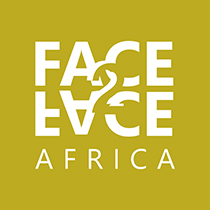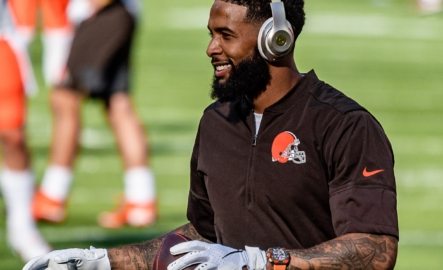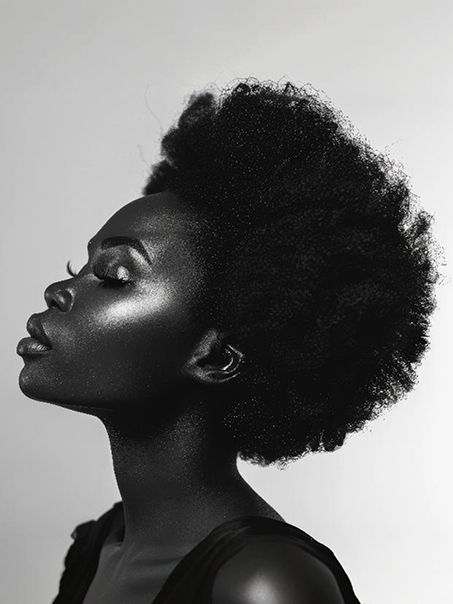At 6 foot 6 inches, Remi Adetiba‘s (pictured) stature and intricate T-shirt emblazoned with the Hindu god Ganesha (a cancer fundraising item I later learn) cut through the busy N.Y.C. East Village crowds with an intention that’s remarkable. The weather is perfect for a day of record shopping and sangria drinking — both activities that Adetiba specializes in. Photographer, technologist, creative director, and pop culture shaman are just a few titles laid upon Adetiba, but he sums himself up with one word: “Nigerian.”
From stints at the top-advertising agencies in the world to his current gig at the New York Times, Adetiba is taking over — one creative outlet at a time. Luckily, Face2Face Africa had the chance to catch up with him before he heads in to Season 2 of judging “Africa’s Next Top Model” as the African Nigel Barker to his friend, supermodel Oluchi Onweagba.
SEE ALSO: Singer Dencia Slams Lupita Nyong’o for Signing Lancome Deal
Keep Up With Face2Face Africa On Facebook!
F2F Africa: Tell us about your journey. How did you get your start in photography?
Remi Adetiba: That’s a funny story. I actually thought I was destined to be an engineer. My mother was among the first women to graduate from Columbia’s engineering program, and I told her I would follow in her footsteps. As an aside — I also told my religious aunts that I would be a minister. Nonetheless, I committed to engineering rather lackadaisically. I missed all the important deadlines for the big engineering programs in the States and convinced myself that maybe I should start at a small school and then transfer up to the big leagues down the line. I ended up choosing Hunter College, mostly because of location, but also because I didn’t have to declare a major straight away. “Undeclared” became my fourth name, and I finally decided I needed to make the move. Midway through my sophomore year, I took my 3.97 GPA and applied to Columbia’s Engineering School. They thought I was wonderful, stellar even — except for my lack of any engineering prerequisites. I attempted to jump in to Physics at Hunter, had the intellectual capacity to do it, but for whatever reason, I wasn’t getting it. I considered switching professors, but by the middle of my first class, I started feeling like Charlie Brown in a Peanuts episode.
That day, I walked out, switched my major to media, and never looked back. Of course, it’s actually the field of my father who was a VP/Managing Director at a big advertising agency in his day — incidentally he was the one person I hadn’t made any professional promises to.
F2F Africa: Why did you choose media specifically?
RA: In some ways I’ve always sort of viewed my life through music, fashion, and art, so it was very natural. I love the East Village for that. When I was in college, walking through this neighborhood was my only time to really reflect. I’m an A to B person — very intentional, very efficient — but here I could stop at all the record shops, where they would get the unreleased industry cuts from singles. I remember vividly the day I clamored to get MC Hammer’s “Pumps and a Bump” single. The indie stores in the neighborhood made it possible to get my hand on these old gems without an awkward moment in a big box music store. I made relationships with the shop owners and understood the industry as it was then. Even my family was musical: my mom, the science mind, was also a hard-core Bob Marley fan, and my dad was in to [Frank] Sinatra and Mighty Sparrow. I remember when my sister Kemi [that’s right, director and TV host Kemi Adetiba, pictured in the below photo gallery] brought home Dr. Dre’s “The Chronic”; it was a game changer for me. It all made sense.
Watch Remi Adetiba at work here:
F2F Africa: What was next after Hunter?
RA: I decided to jump in to the advertising world and use art to influence people. My mom actually gave me the best advice: “Only work with the best,” and I stuck to it. Out of all the offers I received, I accepted the one that paid the least because they were the best. My first gig out of college I was working on campaigns for the NFL, Pernot Ricard, the Superbowl — I actually launched the first Kindle.
It was an amazing experience.
I befriended David Warren [art director behind the iconic Absolut vodka ads] and really excelled in that space. I went on to work on some of the biggest brands in the world, and more importantly, with some of the best people in the world. That’s why you stay in advertising — it’s the people. You are in a situation where you are in the office by 8:45 a.m. and you are there until 1a.m. and then you go out and get drunk with your team and do it all over day after day. Sleep was not a thing, so you go hard for the people.
F2F Africa: The advertising industry is pretty absent of people of color, especially in leadership. Did you come across this, and if so, did you join organizations like AdColor to network and find creative ways to climb that ladder?
RA: First and foremost, I was clear that my full name (Aderemi Adetiba) could’ve easily had me mistaken for an Italian — and that probably got my foot in the door with anyone who defined “Black” as “Leroy Jenkins.” My aim once I was in the interview was to show a mind that wowed them. I was the “visa guy,” meaning I needed a work visa to be here, and for that, I felt I was underpaid from the beginning. It stuck with me, and knowing my value was a driving force for me from my second agency, onward. There were a few Black men here and there, but what bothered me most was the absence of Black women. Outside of administrative roles, you just didn’t see them, which I thought was a problem and made me uncomfortable. Later in my advertising career, I worked at Draftfcb and they did an amazing job with making diversity real. I did participate in some Blacks in advertising groups and those were helpful. Actually, one of my favorite things right now is this viral “MAD MEN”-meets-Blaxploitation trailer for Don-O-Mite created by my friend Ben Cruz from an earlier agency.
F2F Africa: So you’re doing amazing things in the mecca of the advertising industry. Why the pivot out and why Africa?
RA: I guess ultimately it didn’t give me the feeling I wanted anymore. The industry is a great time and I thoroughly enjoyed my experiences in it, but like most advertising folks, I had a second life. For my friends and colleagues in the industry, it was usually a band. For me, it was photography and creative direction, which started to become more than secondary. I had spent years retouching and creative-directing with some top photographers in North America, Africa, and Asia, and eventually ended up at the NY Times, (because there’s no saying no to them, really) and continued to hone my craft. At the same time, I was spending more time on the continent and knew that there were so many great stories to tell there. That’s what really drives that effort, the idea that I can affect change in Africa through imagery and storytelling.
F2F Africa: So there is a conscious side to you after all! In your acceptance speech at the Africa Diversity Awards on behalf of Oluchi, you talked about “Africa’s Next Top Model” being about more than a pretty picture. How do you create the next generation of people on the continent that get it, when shallowness abounds in the upscale neighborhoods of Africa’s city centers?
RA: You know, in their own way, with their excess and extravagance, the young up-and-comers are affecting change through perceptions. Some of the nicest neighborhoods in Nigeria still aren’t Beverly Hills, but people living like it is can be an assault on the African-poverty stereotype. With “Africa’s Next Top Model,” yes, you have the fashion industry, but women all over the world, especially women of color, are rooting for these girls. They are glued to their Instagram accounts, know every contestant’s move, and are proud to see them succeed.
- Nigerian singer Bez. Photo Credit: Remi Adetiba
- Shot by Marvin Johns, Creative Director: Remi Adetiba
- Nigerian singer Bez. Photo Credit: Remi Adetiba
- Nigerian supermodel Oluchi Orlandi. Photo Credit: Remi Adetiba
- Kemi Adetiba, Remi’s sister, Photo Credit: Remi Adetiba
- Remi Adetiba
- “Africa’s Next Top Model” Season 1, Credit: Remi Adetiba
- Remi Adetiba on “Africa’s Next Top Model,” pictured third from left
F2F Africa: Between the NY Times and “Africa’s Next Top Model” (not to mention an amazing shoot in Barbados) what’s next for Remi Adetiba?
RA: I’m working on a number of really cool photography projects, but first things first, with the next season of Africa’s next top model, all of us are excited to make it bigger and better. Beyond that, I’m looking to do more work on the continent, continue working with artists there, and help them really tell new stories about themselves. I’ve gotten in to production and really enjoy sort of weaving it all together. Having creative control of the ideation, the storyline, and the execution is a space my advertising years have prepared me for. Who knows? I may even start my own agency in Nigeria, but all in due time.
Watch
For a look at Remi’s amazing work over the years be sure to check out his website.



















